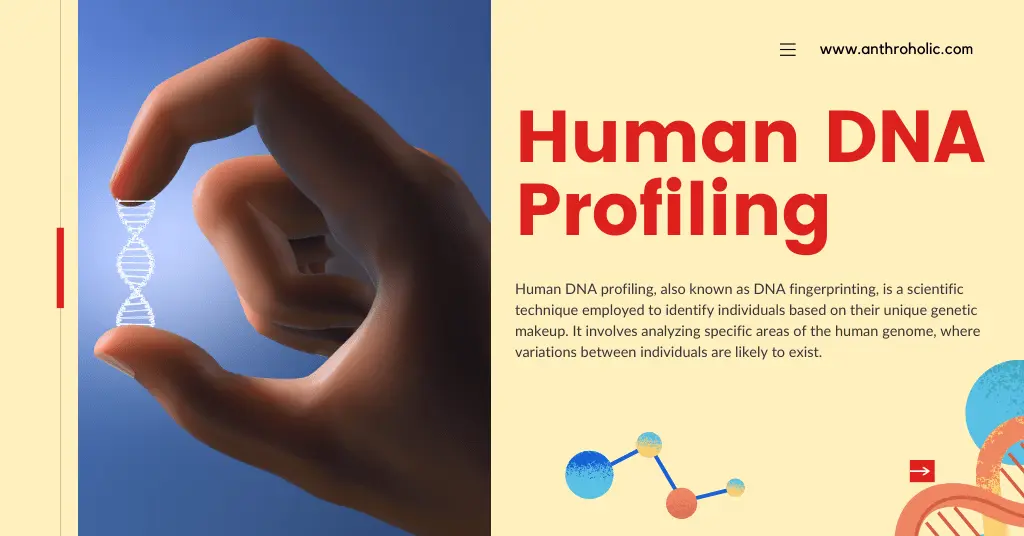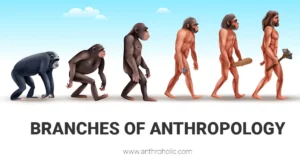Human DNA Profiling (DNA Fingerprinting)
Human DNA profiling, also known as DNA fingerprinting, is a scientific technique employed to identify individuals based on their unique genetic makeup. It involves analyzing specific areas of the human genome, where variations between individuals are likely to exist. This enables an unparalleled level of discrimination, being able to distinguish between two individuals except for identical twins who share the same genetic blueprint (Butler, 2015).

History of DNA Profiling
The genesis of DNA profiling can be traced back to the mid-1980s when British geneticist Alec Jeffreys discovered that certain regions of DNA contained patterns that were unique to each individual. His breakthrough led to the first-ever application of DNA profiling in a criminal case in 1986, marking the dawn of a new era in forensic science (Jobling, Gill, & Jeffreys, 2015).
Importance of DNA Profiling
DNA profiling has emerged as a revolutionary tool in diverse fields including forensics, medicine, wildlife conservation, and ancestry tracing. Its significance lies in its ability to provide robust and reliable information, empowering decision-making in legal proceedings, enabling personalized medical treatments, protecting endangered species, and unveiling intricate human genealogical histories (Bell, 2019).
The Science Behind DNA Profiling
Human Genome and DNA Structure
The human genome, consisting of approximately 3 billion base pairs, is the complete set of DNA in a living organism. DNA itself is a double-stranded helix composed of nucleotide units: adenine (A), cytosine (C), guanine (G), and thymine (T). It’s the unique sequence of these base pairs that defines our genetic identity (Lander et al., 2001).
DNA Profiling Techniques
Various techniques have been developed over the years to unlock the power of DNA for identification and analysis:
Restriction Fragment Length Polymorphism (RFLP)
RFLP was the first method developed for DNA profiling. This process involves extracting DNA, cutting it into fragments using restriction enzymes, and then separating these fragments according to size using a process called electrophoresis (Lyon & Freire-Aradas, 2018).
Polymerase Chain Reaction (PCR)
PCR is a technique used to amplify specific regions of DNA, making it easier to analyze. It has proved indispensable in cases where only a small amount of DNA is available (Saiki et al., 1988).
Short Tandem Repeats (STR) Analysis
STR analysis focuses on specific regions of DNA that contain short sequence repetitions. The number of these repeats varies between individuals, making it a useful tool for profiling (Butler, 2015).
Single Nucleotide Polymorphism (SNP) Analysis
SNPs are variations at a single base pair in the DNA sequence. With millions of SNPs spread across the human genome, their analysis can provide a detailed DNA profile (The International HapMap Consortium, 2005).
Applications of DNA Profiling
Criminal Investigation and Forensics
DNA profiling plays a critical role in the field of forensic science. It’s employed to link suspects to crime scenes, to identify human remains, and to exonerate the innocent (Bell, 2019).
Paternity Testing and Genealogy
DNA profiling offers a reliable method for establishing biological relationships in paternity disputes and in exploring ancestral lines in genealogical research (King & Jobling, 2009).
Personalized Medicine and Genetics
The use of DNA profiling in medicine is increasing. It aids in understanding a patient’s predisposition to certain diseases and tailoring treatments according to their genetic makeup, leading to more effective and personalized healthcare (Katsanis & Katsanis, 2013).
Wildlife and Conservation Genetics
In wildlife and conservation, DNA profiling helps track animal migration, monitor genetic diversity, and manage breeding of endangered species (Frankham, 2010).
Ethical, Legal, and Social Implications
Privacy Concerns and Consent
The proliferation of DNA profiling has raised significant privacy and consent issues. The potential misuse of genetic data can lead to discrimination and breaches of privacy (Rothstein & Talbott, 2006).
Potential for Misuse
Inappropriate use of DNA profiling could result in genetic determinism and stigmatization. It could also be exploited for purposes of surveillance and control (Knoppers, Chadwick, & Human Genome Organisation, 2004).
Ethical Dilemmas
The growth of direct-to-consumer genetic testing has triggered debates around the ethical implications of individuals having access to their genetic information, with concerns about psychological impact and potential for misunderstanding results (Roberts & Ostergren, 2013).
Future Trends and Predictions in DNA Profiling
As DNA profiling continues to evolve, it promises to provide even more nuanced insights into our biology, ancestry, and health. The integration of AI and machine learning techniques may revolutionize this field, making profiling faster, cheaper, and more precise. However, navigating the ethical, legal, and social issues will remain a crucial part of this scientific endeavor (Bell, 2019).
Conclusion
Human DNA profiling is a powerful tool with vast applications in various fields. It’s a testament to the incredible advancements in genetics, providing us the means to unravel complex biological and genealogical mysteries. As it continues to evolve, it holds the promise of breakthroughs that could transform our understanding of human genetics and redefine personalized medicine.
References
- Bell, J. (2019). Forensic DNA Typing. In Forensic Science (pp. 211-232). Springer, Cham.
- Butler, J. M. (2015). Forensic DNA typing: biology, technology, and genetics of STR markers. Elsevier.
- Frankham, R. (2010). Challenges and opportunities of genetic approaches to biological conservation. Biological Conservation, 143(9), 1919-1927.
- Jobling, M. A., Gill, P., & Jeffreys, A. J. (2015). Encounters with DNA: 30 years of human genetics. European Journal of Human Genetics, 23(1), 3-7.
- Katsanis, S. H., & Katsanis, N. (2013). Molecular genetic testing and the future of clinical genomics. Nature Reviews Genetics, 14(6), 415-426.
- King, T. E., & Jobling, M. A. (2009). What’s in a name? Y chromosomes, surnames and the genetic genealogy revolution. Trends in Genetics, 25(8), 351-360.
- Knoppers, B. M., Chadwick, R., & Human Genome Organisation. (2004). Human genetic research: emerging trends in ethics. Nature Reviews Genetics, 6(1), 75-79.
- Lander, E. S., Linton, L. M., Birren, B., Nusbaum, C., Zody, M. C., Baldwin, J., … & Funke, R. (2001). Initial sequencing and analysis of the human genome. Nature, 409(6822), 860-921.
- Lyon, E., & Freire-Aradas, A. (2018). Molecular genetic genealogy of forensic samples. Forensic Science International: Genetics, 33, 188-197.
- Roberts, J. S., & Ostergren, J. (2013). Direct-to-consumer genetic testing and personal genomics services: a review of recent empirical studies. Current Genetic Medicine Reports, 1(3), 182-200.
- Rothstein, M. A., & Talbott, M. K. (2006). The expanding use of DNA in law enforcement: what role for privacy? Journal of Law, Medicine & Ethics, 34(2), 153-164.
- Saiki, R. K., Scharf, S., Faloona, F., Mullis, K. B., Horn, G. T., Erlich, H. A., & Arnheim, N. (1988). Enzymatic amplification of beta-globin genomic sequences and restriction site analysis for diagnosis of sickle cell anemia. Science, 230(4732), 1350-1354.
- The International HapMap Consortium. (2005). A haplotype map of the human genome. Nature, 437(7063), 1299-1320.



